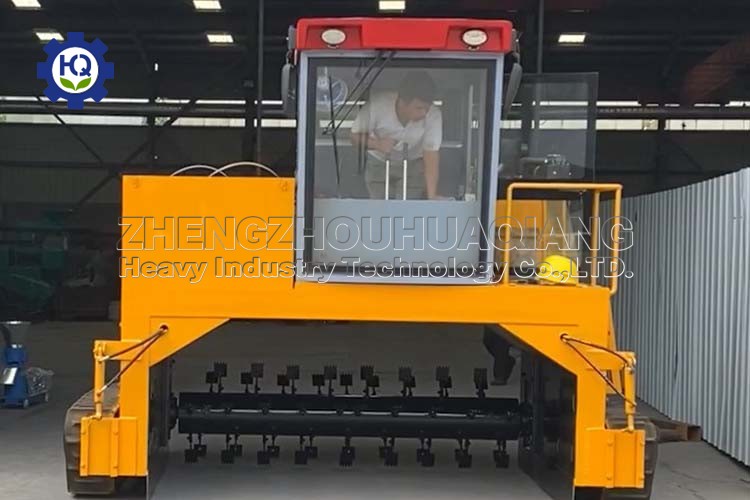As an important equipment in organic fertilizer production, the self-propelled organic fertilizer turning machine greatly improves the efficiency and flexibility of turning operations with its unique operating mechanism. Below is a detailed introduction to its device principle.
The self-propelled organic fertilizer turning machine mainly consists of four core parts: power system, walking system, turning system, and control system.
The power system is the energy source of the entire machine, usually equipped with a diesel engine or an electric motor. Diesel engines generate power by burning diesel, while electric motors rely on external power sources or built-in battery packs for power supply. The energy generated by the power system provides power support for the operation of various components of the equipment.
The walking system endows the stacker with the ability to move autonomously. It usually consists of driving wheels, driven wheels, transmission devices, and suspension systems. The power output from the power system is transmitted to the driving wheels through the transmission device, and the driving wheels rotate under the action of friction, thereby pushing the stacker to move forward, backward, or turn. The driven wheels serve as auxiliary support and guidance, ensuring the stability of the stacker crane during operation. The suspension system can automatically adjust the contact pressure between the wheels and the ground according to the undulating conditions of the ground, so that the stacker can travel smoothly in different terrain conditions.
The turning system is the core working component of the self-propelled organic fertilizer turning machine, responsible for turning and mixing organic materials. It mainly includes flipping tools, tool shafts, and drive mechanisms. The energy of the power system is transmitted to the tool shaft through a series of transmission components, causing the tool shaft to drive the flipping tool installed on it to rotate at high speed. The flipping knives have a special shape and arrangement. When the flipping machine travels on the material pile, the rotating knives cut into the material pile, chop, flip, and sprinkle the material, achieving the mixing of the upper and lower layers of the material and creating favorable conditions for microbial fermentation.
The control system is like the “brain” of the stacker crane, responsible for coordinating the work of various systems. Operators can precisely control parameters such as the output power of the power system, the speed and direction of the walking system, the tool speed and flipping depth of the flipping system through the control console. Some advanced self-propelled organic fertilizer turning machines are also equipped with automation control systems, which can automatically complete turning operations according to preset programs, further improving production efficiency and operational accuracy.
The self-propelled organic fertilizer turning machine achieves the functions of autonomous walking and efficient turning through the close cooperation of the power system, walking system, turning system, and control system, providing reliable technical support for the production of organic fertilizer.